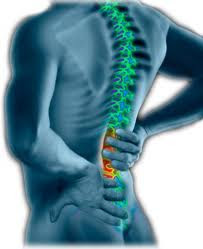
The Superion Interspinous Spacer (ISS) in an investigational medical tool designed to relieve chronic pain that’s caused by moderate lumbar spinal stenosis. Lumbar spinal stenosis is a condition that occurs when nerves in the lower back are compressed. This compression can put pressure on the spinal cord and nerve roots and cause leg, back and groin pain. ISS is a minimally-invasive alternative to traditional spinal surgery. The Superion ISS alternative doesn’t require a large incision, and can therefore minimize the amount of bleeding and trauma to the body. (SOURCE: superionstudy.com)
TREATMENT OPTIONS: According to the Los Angeles Spine Institute, lumbar spinal stenosis is the cause of leg and back pain for nearly 1.2 million Americans. However, there are several treatment options available to relieve symptoms and improve a patient's activity level. Nonsurgical treatments are typically the first line of treatment options for patients who suffer mild to moderate symptoms. This often includes physical therapy, nerve block injections, and/or medicine. When nonsurgical treatments fail to provide relief, patients are traditionally offered a spinal decompression or fusion surgery. These procedures can require a large incision to remove bone and ligaments and can result in a lengthy recovery period.
SUPERION ISS TREATMENT & RECOVERY: The Superion ISS is implanted between the spinous processes through a half-inch skin incision. Once in place, the device can act as a support column to open the passageways that contain the spinal cord and nerve roots. This reduces the compression on the nerves and can therefore relieve pain. The recovery process is typically a short one. Patients may be able to return home the same day of the surgery or may be discharged from the hospital the following day. Physical therapy is usually recommended following the surgery. The type of rehabilitation program will vary from patient to patient. Since every patient's recovery process is different, the surgeon will have to determine how much post-surgical activity is appropriate on an individual basis.
Read More
TREATMENT OPTIONS: According to the Los Angeles Spine Institute, lumbar spinal stenosis is the cause of leg and back pain for nearly 1.2 million Americans. However, there are several treatment options available to relieve symptoms and improve a patient's activity level. Nonsurgical treatments are typically the first line of treatment options for patients who suffer mild to moderate symptoms. This often includes physical therapy, nerve block injections, and/or medicine. When nonsurgical treatments fail to provide relief, patients are traditionally offered a spinal decompression or fusion surgery. These procedures can require a large incision to remove bone and ligaments and can result in a lengthy recovery period.
SUPERION ISS TREATMENT & RECOVERY: The Superion ISS is implanted between the spinous processes through a half-inch skin incision. Once in place, the device can act as a support column to open the passageways that contain the spinal cord and nerve roots. This reduces the compression on the nerves and can therefore relieve pain. The recovery process is typically a short one. Patients may be able to return home the same day of the surgery or may be discharged from the hospital the following day. Physical therapy is usually recommended following the surgery. The type of rehabilitation program will vary from patient to patient. Since every patient's recovery process is different, the surgeon will have to determine how much post-surgical activity is appropriate on an individual basis.
Read More
No comments:
Post a Comment